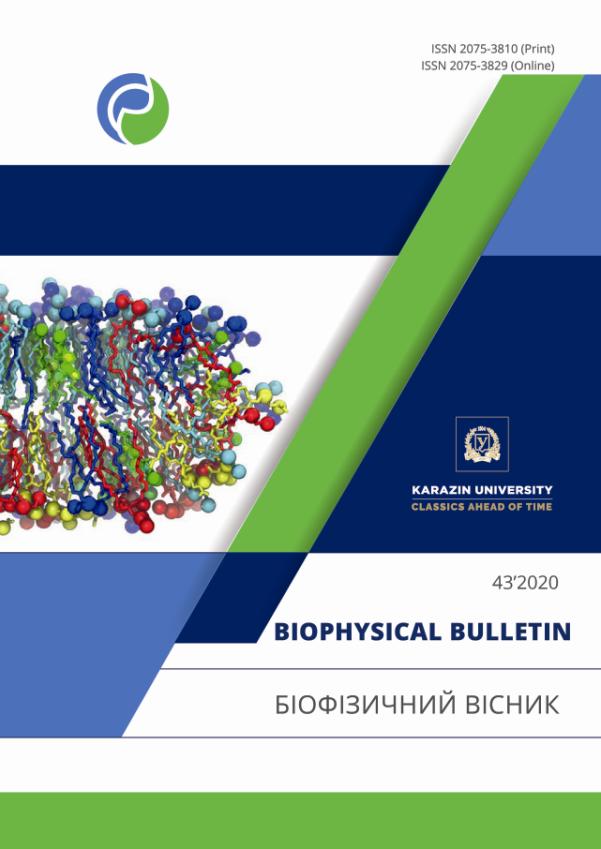Mass spectrometry study of noncovalent complexes formation of antibiotic cycloserine with N-acetyl-D-glucosamine and ascorbic acid
Abstract
Background: While antibiotic cycloserine (CYS) is widely applied in the treatment of tuberculosis, our knowledge of the drug intermolecular interactions with targeting biomolecules and other drugs remains incomplete. It is believed that the CYS antibacterial activity is related to inhibiting the bacterial cell wall biosynthesis. On the other hand, intermolecular interactions of CYS with ascorbic acid (ASC) molecules is worth of studying taking into account that ASC can be used as supporting vitamin preparation or can be affiliated with the patients nutrition.
Objectives: The purpose of the current model study are to examine biologically significant intermolecular interactions of CYS with N-acetyl-D-glucosamine (NAG) as one of the main component of peptidoglycan of bacterial cell wall and to verify the possibility of noncovalent complexes formation between CYS and ASC molecules using electrospray ionization mass spectrometry (ESI MS) technique.
Materials and methods: The objects of the study are model systems composed of CYS and NAG or CYS and ASC prepared in a polar methanol solvent for the ESI MS probing. ESI mass spectra are obtained using the approach earlier developed by us for investigation of the noncovalent complexation of drugs with targeting biomolecules.
Results: The experiments reveal that the ESI mass spectrum of (CYS–NAG) model system contains peaks of protonated molecular clusters of CYS with NAG: [CYS•NAG•H]+ and [CYS•2NAG•H]+. Existing of such peaks in the spectrum testifies to formation of stable noncovalent complexes between CYS and NAG in the studied solution. ESI MS examining of (CYS–ASC) system reveals the noncovalent pair complexation of CYS and ASC molecules confirmed by the recording of intensive peak of [CYS•ASC•H]+ cluster in the spectrum.
Conclusions: The ESI MS findings point to the possibility of noncovalent complexation of CYS with NAG in the polar media including biological systems. Such complexation between the antibiotic and NAG as component of peptidoglycan of bacterial cell wall is considered to be biologically significant for the process of the cell wall biosynthesis inhibiting by CYS. Stable noncovalent complexes formation between the CYS and ASC molecules is suggested as a potential molecular mechanism of the drugs activity modulation under their joint usage.
Downloads
References
Cycloserine. [No authors listed] Tuberculosis (Edinb). 2008 Mar:88(2):100–1. https://doi.org/10.1016/S1472-9792(08)70007-6
Perri GD, Bonora S. Which agents should we use for the treatment of multidrug-resistant Mycobacterium tuberculosis? J Antimicrob Chemother. 2004 Sep:54(3):593–602. https://doi.org/10.1093/jac/dkh377
Prosser GA, de Carvalho LPS. Reinterpreting the Mechanism of Inhibition of Mycobacterium tuberculosis d-Alanine:d-Alanine Ligase by d-Cycloserine. Biochemistry. 2013:52(40):7145–49. https://doi.org/10.1021/bi400839f
Batson S, de Chiara C, Majce V, Lloyd AJ, Gobec S, Dean Rea, et. al. Inhibition of D-Ala:D-Ala ligase through a phosphorylated form of the antibiotic D-cycloserine. Nature Communications. 2017:8:1939. https://doi.org/10.1038/s41467-017-02118-7
Neuhaus FC, Lynch JL. The enzymatic synthesis of D-alanyl-D-alanine. 3. On the inhibition of D-alanyl-D-alanine synthetase by the antibiotic D-cycloserine. Biochemistry. 1964:3(4):471–80. https://doi.org/10.1021/bi00892a001
Lambert MP, Neuhaus FC. Mechanism of D-cycloserine action: alanine racemase from Escherichia coli W. J Bacteriol. 1972 Jun:110(3):978–87.
East SP, Silver LL. Multitarget ligands in antibacterial research: progress and opportunities. Expert Opin Drug Discov. 2013 Feb:8(2):143–56. https://doi.org/10.1517/17460441.2013.743991
Walsh CT, Wencewicz TA. Prospects for new antibiotics: a molecule-centered perspective. J Antibiot. 2014 Jan:67(1):7–22. https://doi.org/10.1038/ja.2013.49
Pashynska VA, Kosevich MV, Gomory A, Vekey K. Model mass spectrometric study of competitive interactions of antimicrobial bisquaternary ammonium drugs and aspirin with membrane phospholipids. Biopolym Cell. 2013:29(2):157–62. https://doi.org/10.7124/bc.000814
Pashynska V, Stepanian S, Gomory A, Vekey K, Adamowicz L. Competing intermolecular interactions of artemisinin-type agents and aspirin with membrane phospholipids: Combined model mass spectrometry and quantum-chemical study. Chem Phys. 2015:455:81–7. https://doi.org/10.1016/j.chemphys.2015.04.014
Pashynska V, Stepanian S, Gomory A, Vekey K, Adamowicz L. New cardioprotective agent flokalin and its supramolecular complexes with target amino acids: An integrated mass-spectrometry and quantum-chemical study. J Mol Struct. 2017:1146:441–9. https://doi.org/10.1016/j.molstruc.2017.06.007
Pashynska VA, Zholobak NM, Kosevich MV, Gomory A, Holubiev PK, Marynin AI. Study of intermolecular interactions of antiviral agent tilorone with RNA and nucleosides. Biophys Bull. 2018:39(1):15–26. https://doi.org/10.26565/2075-3810-2018-39-02
Cole R, editor. Electrospray and MALDI mass spectrometry: fundamentals, instrumentation, practicalities, and biological applications. 2nd edition. Hoboken, New Jersey: John Wiley & Sons, Inc.; 2010. 896 p. ISBN: 978-0-471-74107-7
Loo JA. Electrospray ionization mass spectrometry: a technology for studying non-covalent macromolecular complexes. Int J Mass Spectrom. 2000:200(1–3):175–86. https://doi.org/10.1016/S1387-3806(00)00298-0
Wyttenbach Th, Bowers MT. Intermolecular interactions in biomolecular systems examined by mass spectrometry. Annu Rev Phys Chem. 2007:58:511–33. https://doi.org/10.1146/annurev.physchem.58.032806.104515
McCullough BJ, Gaskell SJ. Using electrospray ionisation mass spectrometry to study non-covalent interactions. Comb Chem High Throughput Screen. 2009:12(2):203–11. https://doi.org/10.2174/138620709787315463
Guevremont R, Siu KWM, Le Blanc JCY, Berman SS. Are the electrospray mass spectra of proteins related to their aqueous solution chemistry? J Am Soc Mass Spectrom. 1992 Mar:3(3):216–24. https://doi.org/10.1016/1044-0305(92)87005-J
Authors who publish with this journal agree to the following terms:
- Authors retain copyright and grant the journal right of first publication with the work simultaneously licensed under a Creative Commons Attribution License that allows others to share the work with an acknowledgement of the work's authorship and initial publication in this journal.
- Authors are able to enter into separate, additional contractual arrangements for the non-exclusive distribution of the journal's published version of the work (e.g., post it to an institutional repository or publish it in a book), with an acknowledgement of its initial publication in this journal.
- Authors are permitted and encouraged to post their work online (e.g., in institutional repositories or on their website) prior to and during the submission process, as it can lead to productive exchanges, as well as earlier and greater citation of published work (See The Effect of Open Access).




